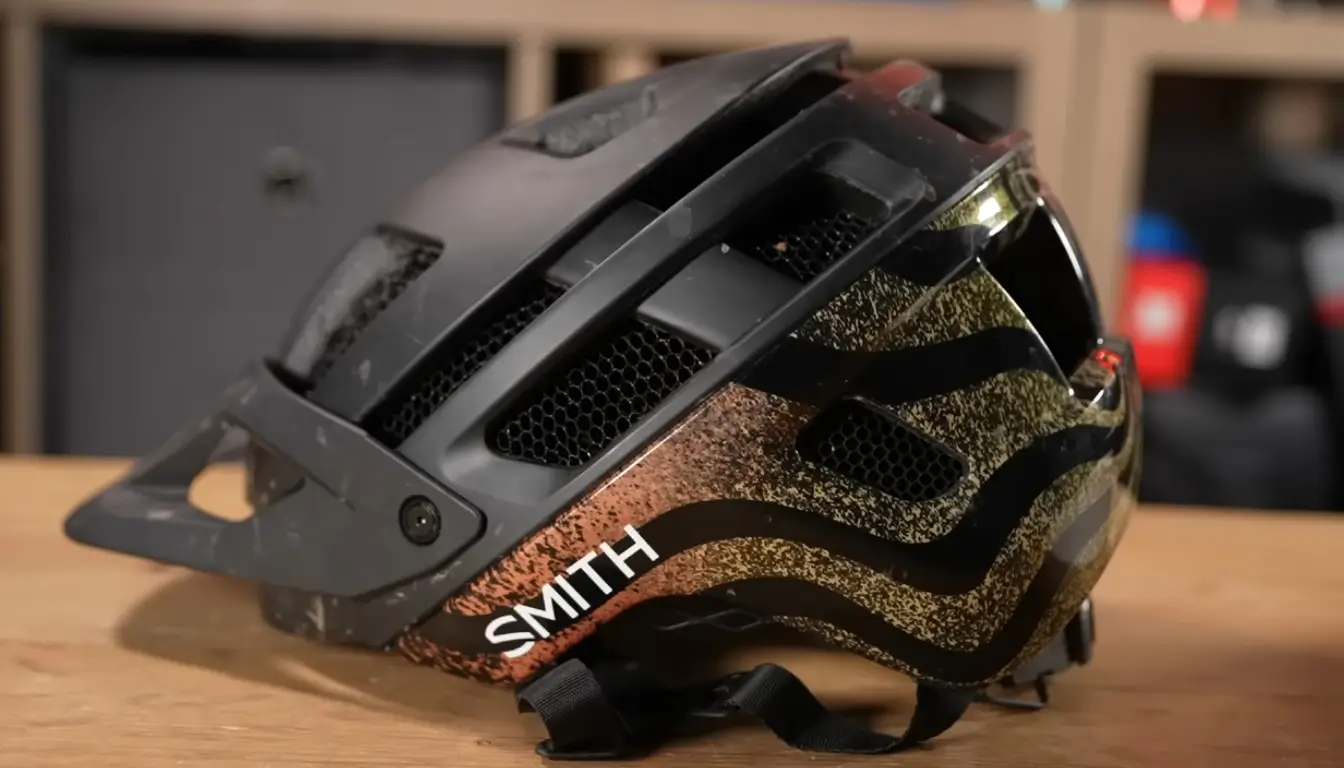Choosing the best mountain biking helmet may not seem like such a big decision, but it is one with many factors to consider. Many different brands and styles exist to explore, but many of these helmets aren’t designed for all-terrain riding environments.
So, how to choose the best mountain bike helmet? The best mountain bike trail helmets offer protection, ventilation, comfort, and weight. Take these things into consideration while buying a helmet.
Let’s find out the factors necessary for choosing the type of helmet you need.
Types of Mountain Bike Helmets
First up, we’re going to talk about the types of helmets available for trail riding.
These fall into three main categories. Trail slash Enduro, downhill helmet, and XC helmet, although it’s worth mentioning, there is some crossover between these categories.
Trail and Enduro helmets are two helmets of do-it-’ll helmets of the mountain bike world. These helmets come with excellent protection in most circumstances and have a great balance of weight, ventilation, and protection.
Obviously, the lack of weight and increased ventilation mean that you compromise on the amount of all-around protection that a cross-country helmet can offer.
How to Choose the Best Mountain Bike Helmet
Choosing the best mountain biking helmet is important for your ride. Whether you are just getting started or have been riding your whole life, there are helpful buying tips you can use to select the best bike helmet for you.
- Protection
The first thing to look for when buying a mountain bike helmet is the level of protection it offers. A good quality helmet always offers good protection. The helmet should also be able to protect your brain and vital organs.
A good helmet is one that has an impact protection system. There are different levels of protection. The back of the helmet has a hard outer shell and interior padding. Pads of the helmet absorb impact.
- Ventilation
These helmets offer a way of airflow, which can mean a warmer and sweaty ahead in hot weather or when you’re pushing really hard happily.
Good ventilation can reduce sweating that occurs, helping your helmet to dry faster.
The more vents, the better! Look for vented eye-port holes and places for air to come out at the sides of your head.
Some helmets on the market use channels cut inside the construction of their helmet to carry air around and over your head.
- Comfort
While the level of protection is essential, the comfort provided by a good helmet is equally as important.
The helmet should fit correctly and not be so loose that it shifts around during operations. A secure fit will provide a better level of safety in the event of a crash since it means the helmet will stay in place.
- Weight
The weight of your helmet is also essential. Helmets are generally heavier. While weight might seem like a major consideration compared to the helmets, other characteristics.
A lightweight helmet would offer a much more pleasant place to be after a long day on the bike, and they can still offer plenty of protection.
Still, chances are they will be more expensive than a heavier helmet with similar levels of safety.
- Helmet Design
There are some features to look for in the design of your helmet. The most obvious is the shape; how does it fit your head? There are different mountain bike helmet designs from which to choose.
Many mtb helmets are designed with a visor to shield the eyes from debris. This visor may be removable or a part of the helmet.
Depending on your head size and shape, the best-fitting helmet can give you incredible comfort, making the long journey more enjoyable.
What Makes a Good MTB Helmet?
A good MTB helmet will be lightweight, comfortable, safe, and fit your head shape.
First, it should cover your entire head, and don’t forget to check the fit to make sure that it’s snug but not too tight. A good MTB helmet is one that can absorb the impact in case of an accident or a crash.
Next, a good mountain bike helmet will be well-ventilated so you won’t feel like you’re drowning in your own sweat while riding or racing your bike.
How to Find Your Cycling Helmets Size
If you’re buying your first bike helmet, you may be unsure about what size to buy. There’s a specific way to measure for correct sizing, however.
- Measurement of Your Head
The only way to choose the right helmet is to get the measurement of your head.
You can do this with a piece of string and a ruler.
Use the string to measure around your head, just above your ears, and use the ruler to measure the distance between these two points.
In inches, divide that number by 3.14 for an approximate circumference measurement. This will give you an idea of what size you need for your helmet size.
- Testing Your Helmet
Choosing the right size for your head is important. The helmet should fit snugly so that it doesn’t move around while you’re riding.
You should use the measurements and guidelines below to test how well the helmet fits. Be sure to be wearing a full-face helmet at all times on your bike.
How to Choose the Right Size Kids’ Bike Helmet?
A Kids’ bike helmet can seem a little confusing with all the information on helmets, but there is no secret. Let’s explain how to get your hands on the best kids’ bike helmet for your child.
- Check the Size
The first step is to check the size of your child’s head and the size of the helmet. Most good bicycle helmets are available in various sizes, so check the labels on each helmet before you purchase it.
- Check the EPS Measurement
The second step is to check the thickness of the helmet padding. Most helmets are made from EPS (expanded polystyrene). This material is a synthetic rubber that absorbs high-impact forces so your child can avoid injury during a crash.
FAQs
What type of helmet is best for mountain biking?
It depends on personal preferences. Some mountain bikers prefer full-face helmets for their extra protection, while others find them too hot and restrictive. Others prefer lighter-weight trail helmets with less coverage for greater comfort and breathability. Ultimately, it is up to the bike riders to decide what type of helmet best suits their needs.
How do I choose a helmet?
Your helmet should fit securely on your head. It should sit level and cover the top of your forehead, with the front of the helmet no more than 1 inch (2.5 cm) above your eyebrow.
How do I test whether my helmet fits correctly?
Adjust the retention system, so it comfortably fits your head, and adjust the chin strap to snug around your neck. Once adjusted correctly, you can further test your fit by strapping on the helmet and sitting on your bike. The fit is too loose or tight if it doesn’t remain level when you sit down or move too far forward or back.
How do I wash my helmet?
Wash your helmet with mild soap in warm soapy water to remove dirt and grime from the helmet’s exterior only. Do not use fabric softener or bleach. In the unlikely event your helmet gets dirty, could you not put it in a washing machine? If you can’t wash your helmet by hand, you should throw it away and replace it with a new one.
Conclusion
That’s all about how to choose the best mountain bike helmet. No matter the helmet you’re using, it’s essential to make sure that it fits well, so you don’t have to worry about safety.
We hope that you found our guide to be informative and helpful. If you’ve any questions or concerns, feel free to comment below.

I am Ryan Ford, a mountain biking enthusiast who loves to explore the outdoors. I also like to go on adventures with friends and anything else that involves being outside. I love my bike because it gets me out of the house and gives me an opportunity to enjoy nature.

